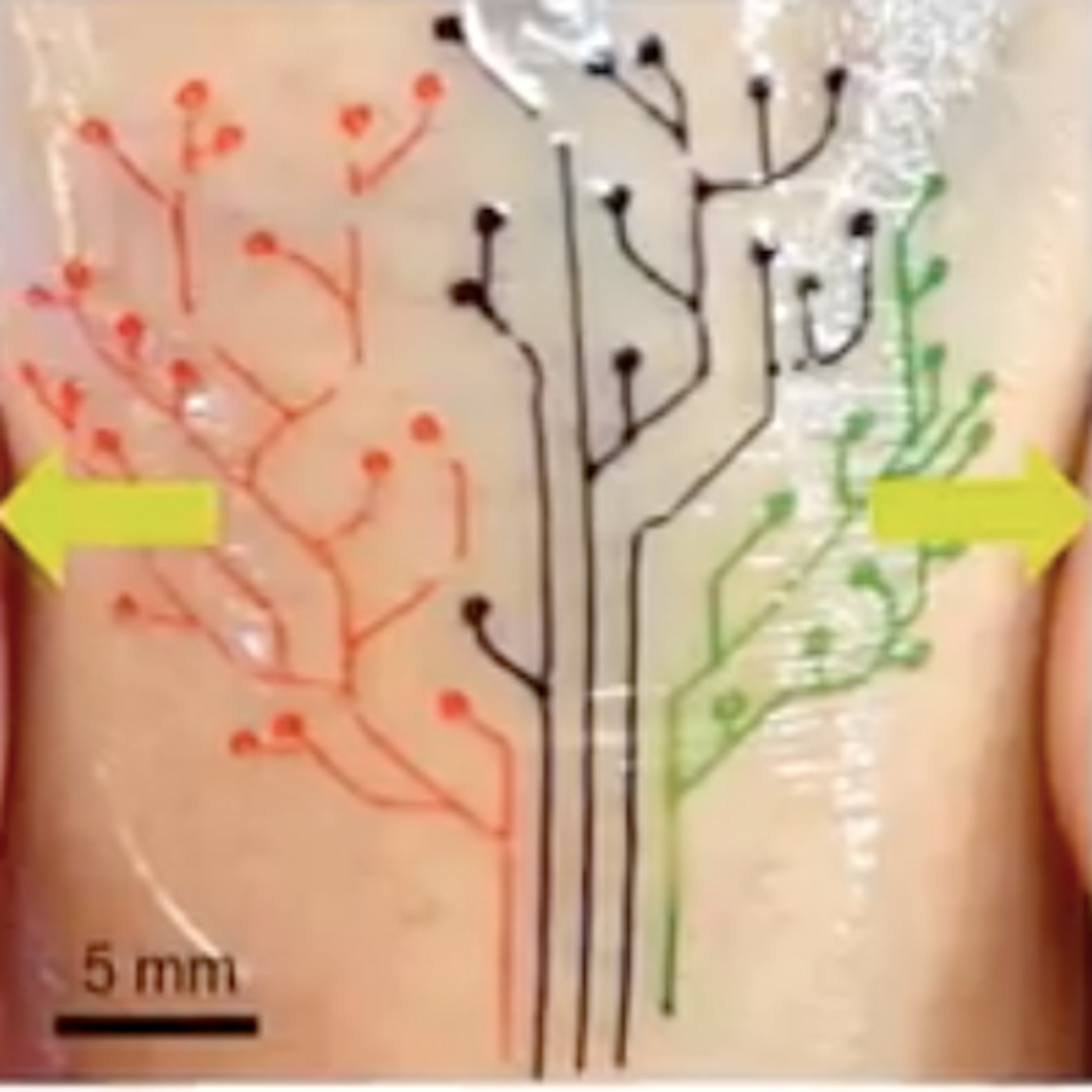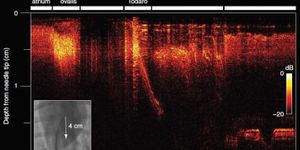A new type of 3D printing uses a special ink derived from genetically altered live cells; it has allowed scientists to make a patch, or “living tattoo” of bacterial cells that react to specific compounds. When the patch is applied to skin that has been treated with these same compounds, the pattern lights up with color. These specialized cells can respond to a variety of stimuli and can be printed to form three dimensional devices or structures.
The work was led by Xuanhe Zhao, the Noyce Career Development Professor in MIT's Department of Mechanical Engineering, and Timothy Lu, an Associate Professor of Biological Engineering and of Electrical Engineering and Computer Science. They said that this process would enable the fabrication of "active" materials, like wearable sensors and interactive displays. These elements can be aligned with engineered cells, to survey chemicals in the environment as well as shifts in pH and temperature.
This technology was used by the researchers to create a model that predicts how cells interact in a 3D-printed structure under various conditions. That will help scientists who are designing live materials that can sense and respond. The study has been reported in Advanced Materials.
While there have been other attempts in this area, they have not been successful because mammalian cells are not robust enough to stand up to the rigors of 3D printing. "It turns out those cells were dying during the printing process because mammalian cells are basically lipid bilayer balloons," explained co-author Hyunwoo Yuk. "They are too weak, and they easily rupture."
Bacterial cells were a good option. They have a sturdy cell wall, and they are compatible with hydrogels, a matrix of water and polymer used in 3D printing. After the team put in a lot of work selecting the cells and finding the most compatible hydrogel, they settled on plutonic acid.
"This hydrogel has ideal flow characteristics for printing through a nozzle," Zhao said. "It's like squeezing out toothpaste. You need [the ink] to flow out of a nozzle like toothpaste, and it can maintain its shape after it's printed."
They went on to create an ink containing the hydrogel and cells, along with nutrients. With a unique printer made by the team, the patch, a pattern of cells in the shape of a tree, was made and tested on human skin. The bacterial cells in the patch were shown to be responsive to a chemical stimulus.
Yuk suggested that researchers may use this technique one day to make "living computers,” which are comprised of multiple cell types interacting with one another, passing signals like the transistors of a microchip.
"This is very future work, but we expect to be able to print living computational platforms that could be wearable," Yuk said.
In the near-term, the researchers want to engineer stickers or patches that are customized sensors of various molecular compounds. They are hopeful that another application is in the manufacture of drug capsules or medical implants, with cells engineered to produce chemicals like glucose, and release them in a controlled way.
"We can use bacterial cells like workers in a 3-D factory," Liu said. "They can be engineered to produce drugs within a 3-D scaffold, and applications should not be confined to epidermal devices. As long as the fabrication method and approach are viable, applications such as implants and ingestibles should be possible."
Sources: AAAS/Eurekalert! Via MIT, Advanced Materials





![Everything You Need To Know About NGS [eBook]](https://d3bkbkx82g74b8.cloudfront.net/eyJidWNrZXQiOiJsYWJyb290cy1pbWFnZXMiLCJrZXkiOiJjb250ZW50X2FydGljbGVfcHJvZmlsZV9pbWFnZV9mNTM1ZjIyYzA5MDE5ZmNmMWU5NmI0ZDc4NWU2MzdiZTZlN2I5ZDk5XzE4NDUuanBnIiwiZWRpdHMiOnsidG9Gb3JtYXQiOiJqcGciLCJyZXNpemUiOnsid2lkdGgiOjcwMCwiaGVpZ2h0IjozNTAsImZpdCI6ImNvdmVyIiwicG9zaXRpb24iOiJjZW50ZXIiLCJiYWNrZ3JvdW5kIjoiI2ZmZiJ9LCJmbGF0dGVuIjp7ImJhY2tncm91bmQiOiIjZmZmIn19fQ==)



